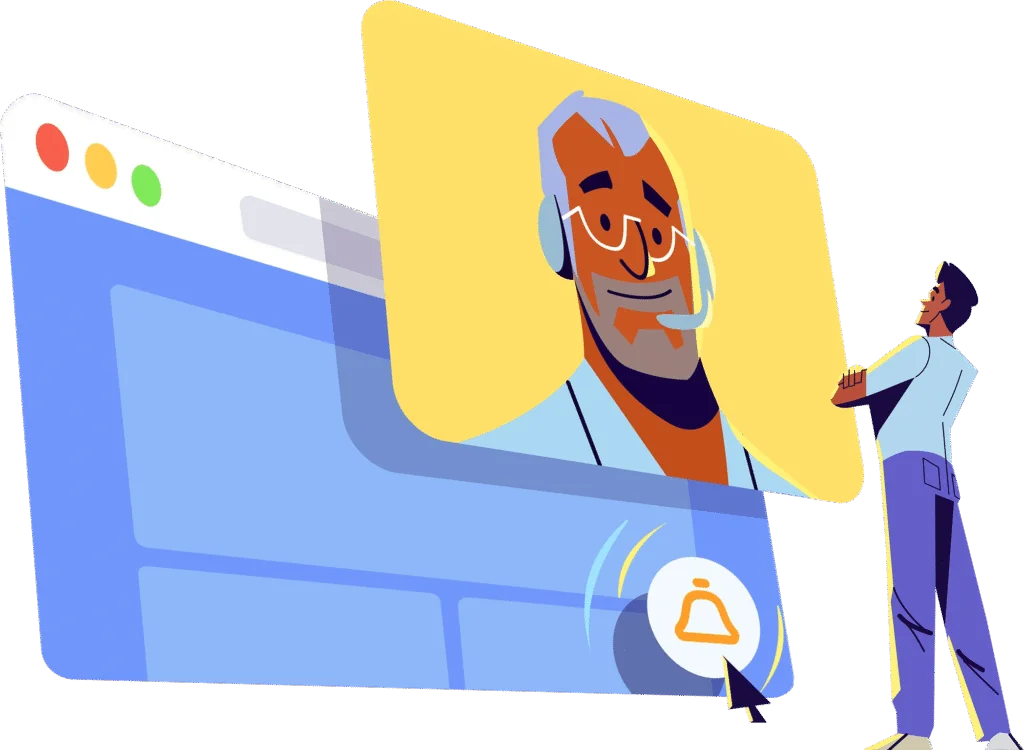“Can you show me the damage?” is a question every restoration contractor asks. But until
recently, the answer often involved a long drive, a shaky phone video or blind trust in a client’s
description.
Today, with instant live video, that conversation looks very different.
Imagine this: a commercial property manager calls at 6:30 a.m. about a burst pipe in a
second-floor tenant suite. Instead of guessing at the scope or sending someone out blindly, your
office team sends a secure video link via text. The property manager clicks, walks through the
space on camera and within five minutes, your estimator sees the water damage on the walls,
notes two affected rooms and confirms the need for immediate action. By 7:15 a.m., your crew
is en route with the right equipment, and the job is already documented for the insurer.
That’s the power of live video in restoration: immediate visibility, faster response and better
decision making.
Why Live Video Matters
Time is critical in restoration. Every minute spent waiting for someone to arrive on-site increases
the risk of secondary damage, customer frustration or lost business.
Live video offers a versatile solution for various business needs. It enables instant job
assessment, eliminating the need for immediate on-site technician dispatch. Moreover, it
facilitates the capture of visual documentation, crucial for claims and legal protection.
Instant video technology also empowers businesses to guide clients or tenants through
emergency procedures and enhance communication with adjusters and subcontractors.
Ultimately, it allows for the efficient management of multiple sites remotely.
How Restoration Companies Are Using Live Video
Restoration firms are using live video in several impactful ways:
- Remote Assessments
An office-based estimator can launch a video session with a homeowner and get a clear view of
the damage in real time, whether it’s a flooded basement or a soot-covered attic. - Client Walkthroughs
Project managers use video to show progress, explain scope or get approvals without asking
the client to visit the job site. - Ensure Safety
Supervisors can verify if there is proper PPE use, containment setup and stop job site hazards
remotely. You can also use it for quick safety coaching or new hire training without needing to be
on-site. - Crew Coordination
Supervisors can remotely inspect job quality, troubleshoot equipment issues or certify
completion, saving time and gas. - After-Hours Calls
Instead of rolling a truck for every emergency call, managers can use video to determine
whether a situation is urgent or can wait until morning.
What You Need to Get Started
Starting to integrate live video into your company’s operations doesn’t take much; most teams
already have the basics:
- Smartphones, tablets or laptops with cameras
- A reliable live video platform, such as Zoom, Microsoft Teams or LiveSwitch
- Wi-Fi access or hotspots
- Tripods or mounts for hands-free recording
Training your office staff to initiate live video links is just as important as training your techs to
receive them. In many cases, the best time to use video is during that first call with a customer
to familiarize them with your company and plan of action.
Challenges to Watch For
Adopting live video does come with a few roadblocks. Here’s what to prepare for and how to
overcome it.
Field Connectivity Issues
In disaster zones or remote areas, cell coverage may be poor. Look for video tools that work on
low-bandwidth networks or allow offline photo capture with auto-upload.
Employee Buy-In
Not every crew member is comfortable being on camera. Keep it simple. Make video use part of
your standard operating procedure and assign one person per crew as the “video lead.” Also,
schedule regular training sessions to keep crews up to date on software.
What’s Coming Next: New Technology in Live Video
The tools available to restoration pros are evolving fast. Here are three cutting-edge features
beginning to reshape how video is used on the job:
AI-Powered Inventory Lists
Using computer vision, live video platforms can now scan rooms and generate detailed
inventory reports automatically. This means:
- Faster removal of belongings
- Better documentation for insurance claims
- Less manual data entry for your team
Web Forms with Video Links
Web Forms now support custom fields and automatic video request links. When a customer fills
out a form, they get a personalized link to submit footage instantly.
- Tailor intake forms for different service types
- Route responses to designated team members
- Use one-click sharing to deploy forms via text or email
QR Code Video Collection
Every account now has a unique QR code that opens a recording form when scanned—no app
required. It’s a simple way to collect video from anyone, anywhere.
- Let clients submit videos at their convenience
- Receive field footage from crews or subcontractors
- Auto-upload to your video library for review and documentation
Final Tips for Success
Start small, use live video for assessments and client communication. Train one team or
department first, and make it easy for clients to join video calls. Set clear expectations: explain
why video helps them get faster service, faster claims and better results.
Most importantly, document everything. Store recordings, stills, and notes in your job files to
support your work, protect your company and build trust with insurers.
In the fast-paced world of restoration, the companies that learn to use live video technology now
will not only move faster but also communicate better, reduce costs and stand out in a crowded
market. And as new technology like AI-powered reporting and video web forms becomes
standard, the value of live video will only grow.




